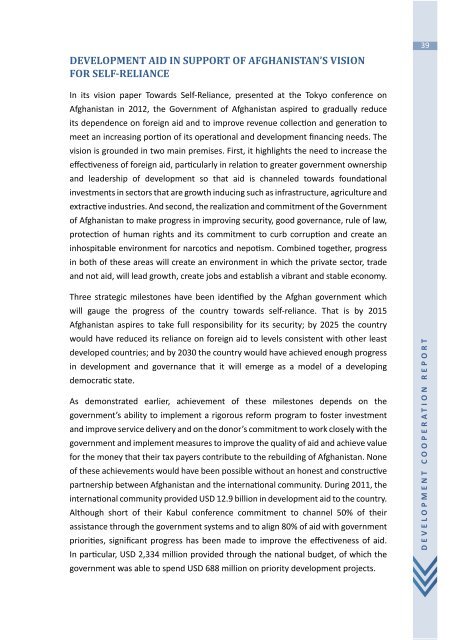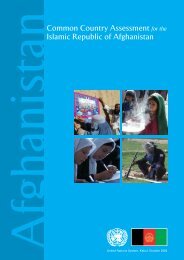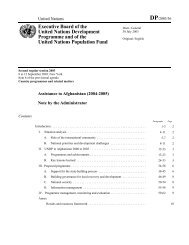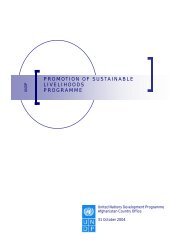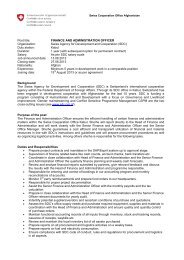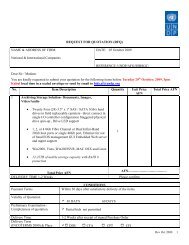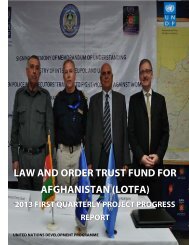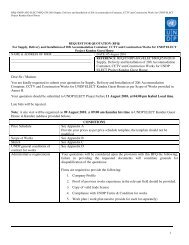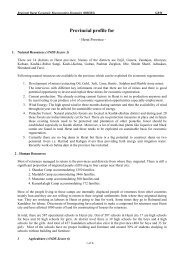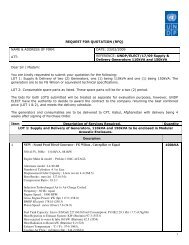Development Cooperation Report 2012 - UNDP Afghanistan
Development Cooperation Report 2012 - UNDP Afghanistan
Development Cooperation Report 2012 - UNDP Afghanistan
You also want an ePaper? Increase the reach of your titles
YUMPU automatically turns print PDFs into web optimized ePapers that Google loves.
DEVELOPMENT AID IN SUPPORT OF AFGHANISTAN’S VISION<br />
FOR SELF-RELIANCE<br />
39<br />
In its vision paper Towards Self-Reliance, presented at the Tokyo conference on<br />
<strong>Afghanistan</strong> in <strong>2012</strong>, the Government of <strong>Afghanistan</strong> aspired to gradually reduce<br />
its dependence on foreign aid and to improve revenue collection and generation to<br />
meet an increasing portion of its operational and development financing needs. The<br />
vision is grounded in two main premises. First, it highlights the need to increase the<br />
effectiveness of foreign aid, particularly in relation to greater government ownership<br />
and leadership of development so that aid is channeled towards foundational<br />
investments in sectors that are growth inducing such as infrastructure, agriculture and<br />
extractive industries. And second, the realization and commitment of the Government<br />
of <strong>Afghanistan</strong> to make progress in improving security, good governance, rule of law,<br />
protection of human rights and its commitment to curb corruption and create an<br />
inhospitable environment for narcotics and nepotism. Combined together, progress<br />
in both of these areas will create an environment in which the private sector, trade<br />
and not aid, will lead growth, create jobs and establish a vibrant and stable economy.<br />
Three strategic milestones have been identified by the Afghan government which<br />
will gauge the progress of the country towards self-reliance. That is by 2015<br />
<strong>Afghanistan</strong> aspires to take full responsibility for its security; by 2025 the country<br />
would have reduced its reliance on foreign aid to levels consistent with other least<br />
developed countries; and by 2030 the country would have achieved enough progress<br />
in development and governance that it will emerge as a model of a developing<br />
democratic state.<br />
As demonstrated earlier, achievement of these milestones depends on the<br />
government’s ability to implement a rigorous reform program to foster investment<br />
and improve service delivery and on the donor’s commitment to work closely with the<br />
government and implement measures to improve the quality of aid and achieve value<br />
for the money that their tax payers contribute to the rebuilding of <strong>Afghanistan</strong>. None<br />
of these achievements would have been possible without an honest and constructive<br />
partnership between <strong>Afghanistan</strong> and the international community. During 2011, the<br />
international community provided USD 12.9 billion in development aid to the country.<br />
Although short of their Kabul conference commitment to channel 50% of their<br />
assistance through the government systems and to align 80% of aid with government<br />
priorities, significant progress has been made to improve the effectiveness of aid.<br />
In particular, USD 2,334 million provided through the national budget, of which the<br />
government was able to spend USD 688 million on priority development projects.<br />
DEVELOPMENT COOPERATION REPORT


